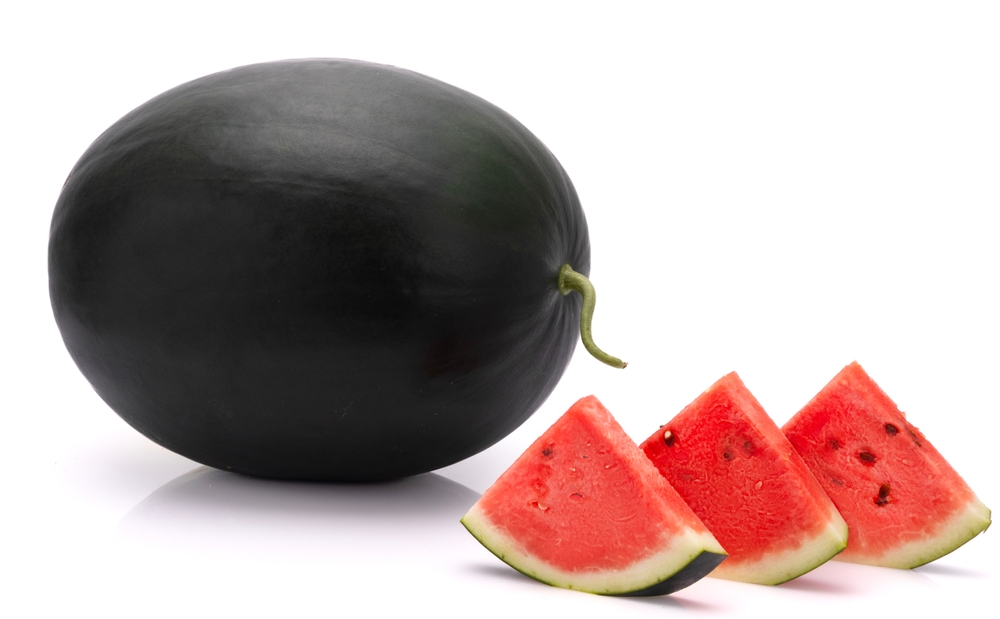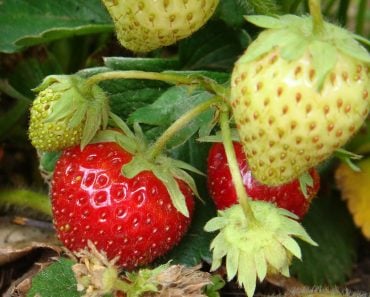Table of Contents (click to expand)
Watermelons have a whole host of patterns on their surface, each developed based on what consumers prefer. Rind patterns are genetically controlled and watermelon breeders design their crosses based on what kind of variety they are developing.
The renowned author Paolo Coelho said, “Outer beauty is inner beauty made visible.” This is certainly true for watermelons as well. We enjoy the delicious pink flesh of the watermelon only after we select our watermelon based on its external appearance.
Sellers want their watermelon bins or piles to look a certain way to attract buyers. Consumers have specific preferences for what a watermelon should look like, and they prize watermelons that fit these preferences.
Some parts of the world have a strong preference for striped watermelon fruits, while others have a preference for dark green fruits, and still others prefer light green varieties. The type of stripe varies with the watermelon variety. They can be wide, medium, narrow, or thin.
Watermelon growers will only cultivate varieties that the consumers in their region (or target export market) prefer.
In this article, we will discuss different types of watermelon fruits based on their rind patterns.
Rind patterns are genetically controlled and watermelon breeders design their crosses based on what watermelon variety they are developing.
Recommended Video for you:
Types Of Watermelons
Watermelons are categorized into different types based on the type of rind they have, as well as their shape.

Crimson Sweet watermelons have dark green medium-width stripes on a light green background. The width of the stripe and the background are more or less equal. Commercially available Crimson Sweet melons are usually oblong in shape and can be seeded or seedless. However, that doesn’t mean that they cannot be round or elongated. Most regions around the world prefer Crimson Sweet watermelons to be oblong in shape. The flesh inside can be red, pink, or yellow.
The first Crimson Sweet variety was developed by Charlie Hall in 1963 at Kansas State University, USA. It went on to become the most popular type of watermelon around the world and all varieties with similar stripes were called ‘Crimson Sweets’. Seeded Crimson Sweet melons are preferred in regions such as Italy, Brazil, Turkey and Chile, and they are starting to gain popularity in India. Seedless Crimson Sweet types are preferred in the US.

All sweet watermelons are usually large and elongated or oblong with wide dark green stripes on a lighter green background. Their difference from the Crimson Sweet type lies in the width of the stripes. In All sweet melons, the dark green stripe is wide and interspersed with a narrow region of lighter green background. The first all sweet variety was released in 1973 by Charlie Hall. Commercially available all sweet types are seeded and are popular in regions such as Mexico, South Italy, and some African countries.

Sugar Baby watermelons have very dark green rind with no stripes. The shade of dark green can vary, with some varieties having almost a black rind, and others possessing a medium-dark rind. Although these types do not have the typical stripes, occasionally they have some very fine lines (called pencil stripes). The first Sugar Baby watermelon was introduced in 1955. Sugar Baby melons are usually round to oval and can be seeded or seedless. Seeded sugar baby types are preferred in India. Seedless sugar babies are preferred in Australia and Spain.

Jubilee or Tiger watermelons have stripes that are very dark green, angular, and thin on a light green or pale background. The first Jubilee watermelon, with the same variety name, was developed by JM Crall in 1963 at the Florida Agricultural Experiment Station, USA. Since then, all watermelon varieties with that type of stripe are called Jubilees. Most commercial jubilee types are round or oval and can be seeded or seedless. Seeded jubilee types are common in Southeast Asian markets, while seedless jubilee types are popular in the US.

Charleston Gray watermelons are light green with no stripes. They can be round, oval, or elongated. The first Charleston Grey variety was developed by Charles Frederick Andrus in 1954 at the U.S. Vegetable Breeding Laboratory in Charleston, USA. Charleston grey types are usually older seeded types and can be found in some Middle Eastern and African countries. Most watermelon breeders no longer breed for Charleston grey types; however, they are used in breeding programs to introduce important traits into modern varieties.
Does The Rind Pattern Predict How Sweet The Watermelon Is?
The short answer is: No!
Watermelon varieties are bred based on the preferences of consumers in their target markets. For example, many Asian consumers prefer round-oval seeded watermelons with jubilee stripes and yellow flesh. Therefore, watermelon breeding companies combine these characteristics in their commercial varieties. On the other hand, consumers in the US prefer round-oval seedless jubilee types with red flesh.
There is a common misbelief that darker rind colors correlate with dark red sweeter flesh, but this is not true. This idea probably developed because some of the commonly available sweeter and redder varieties had dark red stripes (e.g., the variety Fascination). However, this does not mean that all varieties with dark stripes will be intensely sweet. Sweetness varies based on the genetics of the variety. A variety with medium green stripes can also have dark red and sweet flesh (e.g., the variety Excursion).
Conclusion
Watermelons can be classified into 5 types (Crimson Sweet, All sweet, Sugar Baby, Jubilee, and Charleston Grey) based on their rind color and pattern. Watermelon breeders develop varieties based on the preferences of consumers in their target markets. Rind color and pattern cannot predict flesh color and sweetness, which are determined by the genetics of the variety and market preference.













